Holly Thompson's Blog, page 12
September 22, 2016
Are You an Echo?
Are You an Echo? The Lost Poetry of Misuzu Kaneko
with narrative and translation by David Jacobson, Sally Ito and Michiko Tsuboi, and illustrated by Toshikado Hajiri, was recently published by Seattle-based Chin Music Press.
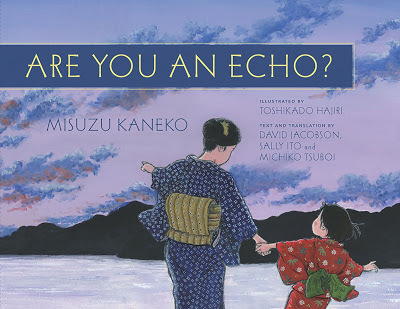
My review of Are You an Echo? now appears on the Contemporary Japanese Literature blog (japaneselit.net). Here is the opening of my review:

Ito's essay provides compelling context and detailed backstory to accompany Are You and Echo? Ito notes of Kaneko's poetry:
Publishers Weekly recently gave the book in-depth coverage in this feature that includes comments by Jacobson and several of the richly detailed illustrations by Tokushima-based illustrator Toshikado Hajiri.
For more information about this book, a treasure for poetry lovers of all ages around the world, visit the website about the book created by Chin Music Press.
And for poets, after reading Are You an Echo? try writing some poems with, as poet/translator Sally Ito puts it, that "watchful gaze" to the "unattended or the invisible."

My review of Are You an Echo? now appears on the Contemporary Japanese Literature blog (japaneselit.net). Here is the opening of my review:
"Are You An Echo? The Lost Poetry of Misuzu Kaneko, published by Seattle-based Chin Music Press, is an unusual picture book — bold and broad in concept and scope. This is a multifaceted book, containing a history of the rediscovery of the writings of Japanese poet Misuzu Kaneko (1903-1930), a biography of Kaneko’s short life, current context for her work, and a selection of 25 of her poems." READ THE FULL REVIEW HEREThis week Electric Lit features a beautiful essay by co-translator Sally Ito: "Forgotten Woman: The Life of Misuzu Kaneko."

Ito's essay provides compelling context and detailed backstory to accompany Are You and Echo? Ito notes of Kaneko's poetry:
"Misuzu had a great capacity for empathy and compassion for all living creatures. And her attentive and watchful gaze often went to the unattended or the invisible. She noticed things other people didn’t and pondered them." READ THE FULL ESSAY HERE.The SCBWI Japan Translation Group blog featured a guest post about the book here by David Jacobson. The post includes the embedded PSA video featuring the poem "Are You An Echo?" widely broadcast after the March 11, 2011 earthquake and tsunami in northern Japan.
Publishers Weekly recently gave the book in-depth coverage in this feature that includes comments by Jacobson and several of the richly detailed illustrations by Tokushima-based illustrator Toshikado Hajiri.
For more information about this book, a treasure for poetry lovers of all ages around the world, visit the website about the book created by Chin Music Press.
And for poets, after reading Are You an Echo? try writing some poems with, as poet/translator Sally Ito puts it, that "watchful gaze" to the "unattended or the invisible."
Published on September 22, 2016 22:56
September 15, 2016
Silver Droplets Fall
This week for #PoetryFriday and #WorldKidLit Month, I shine the spotlight the work of Yukie Chiri (1903-1922) who in her short bilingual lifetime managed to translate oral kamuy yukar tales from Ainu into Japanese.
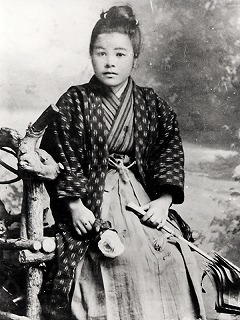 Yukie Chiri (Wikipedia)
Yukie Chiri (Wikipedia)
Yukie Chiri's life was extremely brief, but her upbringing in the household of Ainu elders, and an encounter with a Japanese linguist keen on preserving Ainu language, led her to transcribe the kamuy yukar she'd learned from her elders. In the early twentieth century, Japan was aggressively settling Hokkaido, Ainu were exploited and discriminated against, and traditional Ainu lifestyles and culture were suppressed and endangered. Yukie Chiri's work is of great and lasting importance.
Before her death in 1922, Yukie Chiri managed to transcribe and edit an anthology of thirteen kamuy yukar that she presented in romanized versions of the original Ainu along with Japanese translations. The anthology was published in 1923.
Recently, the Asia-Pacific Journal Japan Focus, as part of its series on the late translator Kyoko Selden, has re-posted a feature on Yukie Chiri by Selden, with Selden's own translation of the prologue of Yukie's anthology plus one of the thirteen tales: "Where the Silver Droplets Fall." This excellent Asia-Pacific Journal post is titled The Song the Owl God Himself Sang, “Silver Droplets Fall Fall All Around,” An Ainu Tale.
I first encountered the work of Yukie Chiri after 3-11. To raise money for teens affected by the 2011 earthquake and tsunami in northern Japan, I compiled and edited Tomo: Friendship Through Fiction--An Anthology of Japan Teen Stories.
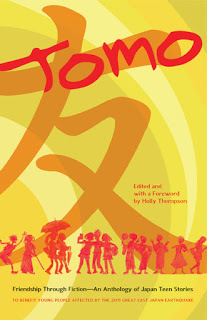
Tomo features 36 stories, with ten of those stories in translation, including a prose-form translation by Deborah Davidson of "Where the Silver Droplets Fall."

Read an interview with translator and longtime Hokkaido resident Deborah Davidson on the Tomo Blog here.
Kyoko Selden's translations in the Asia-Pacific Journal include the moving prologue by Yukie Chiri that reads nearly as a lament and opens with
Selden's translation of "Where the Silver Droplets Fall" appears as a long free-form epic poem. Here is the opening.
Savor these translations of Yukie's transcriptions of these Ainu kamuy yukar. Perhaps our readings will give the spirits of Yukie Chiri and translator Kyoko Selden some small droplets of joy.
As Yukie Chiri wrote in her prologue to the anthology:
 Yukie Chiri (Wikipedia)
Yukie Chiri (Wikipedia)Yukie Chiri's life was extremely brief, but her upbringing in the household of Ainu elders, and an encounter with a Japanese linguist keen on preserving Ainu language, led her to transcribe the kamuy yukar she'd learned from her elders. In the early twentieth century, Japan was aggressively settling Hokkaido, Ainu were exploited and discriminated against, and traditional Ainu lifestyles and culture were suppressed and endangered. Yukie Chiri's work is of great and lasting importance.
Before her death in 1922, Yukie Chiri managed to transcribe and edit an anthology of thirteen kamuy yukar that she presented in romanized versions of the original Ainu along with Japanese translations. The anthology was published in 1923.
Recently, the Asia-Pacific Journal Japan Focus, as part of its series on the late translator Kyoko Selden, has re-posted a feature on Yukie Chiri by Selden, with Selden's own translation of the prologue of Yukie's anthology plus one of the thirteen tales: "Where the Silver Droplets Fall." This excellent Asia-Pacific Journal post is titled The Song the Owl God Himself Sang, “Silver Droplets Fall Fall All Around,” An Ainu Tale.
I first encountered the work of Yukie Chiri after 3-11. To raise money for teens affected by the 2011 earthquake and tsunami in northern Japan, I compiled and edited Tomo: Friendship Through Fiction--An Anthology of Japan Teen Stories.

Tomo features 36 stories, with ten of those stories in translation, including a prose-form translation by Deborah Davidson of "Where the Silver Droplets Fall."

Read an interview with translator and longtime Hokkaido resident Deborah Davidson on the Tomo Blog here.
Kyoko Selden's translations in the Asia-Pacific Journal include the moving prologue by Yukie Chiri that reads nearly as a lament and opens with
Long ago, this spacious Hokkaido was our ancestors’ space of freedom.
Selden's translation of "Where the Silver Droplets Fall" appears as a long free-form epic poem. Here is the opening.
The Song the Owl God Himself Sang“Silver droplets fall fall all around megolden droplets fall fall all around me.” So singingI went down along the river’s flow, above the human village.As I looked down belowpaupers of old have now become rich, while rich men of oldhave now become paupers, it seems.By the shore, human children are at playwith little toy bows with little toy arrows.“Silver droplets fall fall all around megolden droplets fall fall all around me.” click to read more
Savor these translations of Yukie's transcriptions of these Ainu kamuy yukar. Perhaps our readings will give the spirits of Yukie Chiri and translator Kyoko Selden some small droplets of joy.
As Yukie Chiri wrote in her prologue to the anthology:
If many of you who know us read this book, on behalf of our ancestral people, I would consider it an infinite joy, a supreme blessing.
Published on September 15, 2016 14:21
June 23, 2016
Poetry Stone--Bokusui Wakayama
Traveling around Japan, it's fairly common to come across poetry stones--large or small stones inscribed with poetry composed by well-known poets. Sometimes the stones have stood for centuries, sometimes decades, and some are quite new. A poetry stone can make you stop in your day's journey to listen and notice. A poetry stone can make your brain suddenly see the world around you in words.
Last weekend, I was in one of my favorite villages on the Izu Peninsula of Shizuoka Prefecture. Iwachi is a tiny fishing village tucked between the sea and steep mountains.

In the middle of the village just behind the sea wall, stands a poetry stone.

The stone is inscribed with a tanka poem by the poet Bokusui Wakayama (Wakayama Bokusui in Japanese name order).

And beside the stone, there is a signboard with a transcription of the carving and information about the stone carver.

My translation of the sign follows:
***
the mountain sleepsat the mountain's feetthe sea sleeps journeying this landin doleful spring
Bokusui
Poem composed by Wakayama Bokusui Inscription by the late Saitō Iseuemon
***Bokusui Wakayama (1885-1928), hailing from Miyasaki in the south of Japan, traveled widely throughout Japan and Korea and composed many tanka during his travels. He settled in Numazu, just north of the Izu Peninsula in the 1920s. Bokusui's poems were often infused with and expressed the natural world. For more about this poet, see this Bokusui Wakayama focus in the journal Poetry Kanto, which includes translations by Gregory Dunne and Goro Takano of five of Bokusui's poems.
I was motivated by Bokusui to scribble notes for some of my own short poems.
Here is one of my tanka from my recent visit to the quiet west coast of Izu.
full moon rising tide sloshing waves deposit clams that rest a moment upend and burrow down in-- this village will do
and a haiku:
persimmon tree hides its tiny green persimmons and the hotspring bath
© Holly Thompson, All Rights Reserved

So when you travel this summer, whether on local day journeys or on long distance treks, perhaps you, too, will encounter a poetry stone. And perhaps you might be inspired to compose your own poems of the environment you journey through.

Last weekend, I was in one of my favorite villages on the Izu Peninsula of Shizuoka Prefecture. Iwachi is a tiny fishing village tucked between the sea and steep mountains.

In the middle of the village just behind the sea wall, stands a poetry stone.

The stone is inscribed with a tanka poem by the poet Bokusui Wakayama (Wakayama Bokusui in Japanese name order).

And beside the stone, there is a signboard with a transcription of the carving and information about the stone carver.

My translation of the sign follows:
***
the mountain sleepsat the mountain's feetthe sea sleeps journeying this landin doleful spring
Bokusui
Poem composed by Wakayama Bokusui Inscription by the late Saitō Iseuemon
***Bokusui Wakayama (1885-1928), hailing from Miyasaki in the south of Japan, traveled widely throughout Japan and Korea and composed many tanka during his travels. He settled in Numazu, just north of the Izu Peninsula in the 1920s. Bokusui's poems were often infused with and expressed the natural world. For more about this poet, see this Bokusui Wakayama focus in the journal Poetry Kanto, which includes translations by Gregory Dunne and Goro Takano of five of Bokusui's poems.
I was motivated by Bokusui to scribble notes for some of my own short poems.
Here is one of my tanka from my recent visit to the quiet west coast of Izu.
full moon rising tide sloshing waves deposit clams that rest a moment upend and burrow down in-- this village will do
and a haiku:
persimmon tree hides its tiny green persimmons and the hotspring bath
© Holly Thompson, All Rights Reserved

So when you travel this summer, whether on local day journeys or on long distance treks, perhaps you, too, will encounter a poetry stone. And perhaps you might be inspired to compose your own poems of the environment you journey through.

Published on June 23, 2016 23:28
June 16, 2016
Loaded June and Chika Sagawa
In times like these, when the world seems harsh and makes too little sense, and questions run round and round in my mind, I seek solace and direction in poetry.
On Wednesday, I attended a poetry event at Temple University Japan on the book that won the 2016 PEN Award for Poetry in Translation: The Collected Poems of Chika Sagawa, translated by Sawako Nakayasu.

Chika Sagawa (or, in Japanese name order, Sagawa Chika) was born in Hokkaido in 1911, and in 1928, at age 17 and against her family's wishes, moved to Tokyo. After immersing herself in the cosmopolitan Tokyo literary community, she began publishing her poems. She died of stomach cancer in 1936 at the early age of 24. As Sawako Nakayasu's introduction to the collection of poems says, "Sagawa Chika is Japan's first female Modernist poet, whose work resonated deeply with, and helped shape, the most dynamic shifts and developments of the poetry of the era."
Read the five Chika Sagawa poems from the collection that appear on the PEN website.
The event was a fascinating introduction to Sagawa's work, to the pre-Pacific War world of poetry in Tokyo, and to Sawako Nakayasu's process of translating these poems that are full of the natural world yet with a sense of menace often lurking between the lines. Poet Mariko Nagai (author of the verse novel Dust of Eden) moderated.
 Sawako Nakayasu and Mariko NagaiIn this week of mourning for the victims of the mass shooting in Orlando, in this week of asking so many questions, in this week of mulling my homes in both Japan and the U.S., and with some inspiration across years and languages from Chika Sagawa, here is my poem for this Poetry Friday.
Sawako Nakayasu and Mariko NagaiIn this week of mourning for the victims of the mass shooting in Orlando, in this week of asking so many questions, in this week of mulling my homes in both Japan and the U.S., and with some inspiration across years and languages from Chika Sagawa, here is my poem for this Poetry Friday.
Loaded June
valley steaminghand beneath a front gatestrews kibbles for a catthe sun leers over the hillspupils shuffle to schoola girl pulls on her shoescrow hops, stands bywarbler dribbles a song“could it happen here?could it happen here?” girl steps into the roadcat spies the warblerwaiting on a plum twiga distant warbler replies“not here no, not here no”one by one the crow steals the damp kibblesthe mud path driestoday’s hydrangeastomorrow parched“could it happen here?could it happen here?”
the girl begins to run
© Holly Thompson, All Rights Reserved
On Wednesday, I attended a poetry event at Temple University Japan on the book that won the 2016 PEN Award for Poetry in Translation: The Collected Poems of Chika Sagawa, translated by Sawako Nakayasu.

Chika Sagawa (or, in Japanese name order, Sagawa Chika) was born in Hokkaido in 1911, and in 1928, at age 17 and against her family's wishes, moved to Tokyo. After immersing herself in the cosmopolitan Tokyo literary community, she began publishing her poems. She died of stomach cancer in 1936 at the early age of 24. As Sawako Nakayasu's introduction to the collection of poems says, "Sagawa Chika is Japan's first female Modernist poet, whose work resonated deeply with, and helped shape, the most dynamic shifts and developments of the poetry of the era."
Read the five Chika Sagawa poems from the collection that appear on the PEN website.
The event was a fascinating introduction to Sagawa's work, to the pre-Pacific War world of poetry in Tokyo, and to Sawako Nakayasu's process of translating these poems that are full of the natural world yet with a sense of menace often lurking between the lines. Poet Mariko Nagai (author of the verse novel Dust of Eden) moderated.
 Sawako Nakayasu and Mariko NagaiIn this week of mourning for the victims of the mass shooting in Orlando, in this week of asking so many questions, in this week of mulling my homes in both Japan and the U.S., and with some inspiration across years and languages from Chika Sagawa, here is my poem for this Poetry Friday.
Sawako Nakayasu and Mariko NagaiIn this week of mourning for the victims of the mass shooting in Orlando, in this week of asking so many questions, in this week of mulling my homes in both Japan and the U.S., and with some inspiration across years and languages from Chika Sagawa, here is my poem for this Poetry Friday.Loaded June
valley steaminghand beneath a front gatestrews kibbles for a catthe sun leers over the hillspupils shuffle to schoola girl pulls on her shoescrow hops, stands bywarbler dribbles a song“could it happen here?could it happen here?” girl steps into the roadcat spies the warblerwaiting on a plum twiga distant warbler replies“not here no, not here no”one by one the crow steals the damp kibblesthe mud path driestoday’s hydrangeastomorrow parched“could it happen here?could it happen here?”
the girl begins to run
© Holly Thompson, All Rights Reserved
Published on June 16, 2016 22:42
AFCC 2016: Japan Country of Focus
In late May I was honored to be a Japan Country of Focus speaker at the Asian Festival of Children's Content (AFCC) in Singapore. Each year the festival features an Asian country of focus and offers presentations, workshops, performances and special events relating to children's content in that country. What a thrill to participate in this year's Japan Country of Focus featuring 20 guest speakers from Japan. And this was all packed into the usual rich array of Asian children's content offerings of AFCC.
 AFCC is always a jam-packed conference, and this year I hit the ground running--presenting, mingling, and attending as many sessions as possible. AFCC is held in the heart of Singapore at the National Library.
AFCC is always a jam-packed conference, and this year I hit the ground running--presenting, mingling, and attending as many sessions as possible. AFCC is held in the heart of Singapore at the National Library.
 National Library of Singapore
National Library of Singapore
 Banner featuring an illustration by the beloved Japanese illustrator Chihiro Iwasaki
Banner featuring an illustration by the beloved Japanese illustrator Chihiro Iwasaki
This year the entire SCBWI Japan regional team attended and presented within the Japan Country of Focus events.
 SCBWI Japan Regional Team: Mariko Nagai, Holly Thompson, Avery Udagawa, Naomi KojimaThe AFCC opening ceremony included the announcement of the Scholastic Asian Book Award winners, and the launch and tour of the exhibition "The History of Japanese Picture Books from e-ingakyo to The Family of Fourteen" from the Chihiro Art Museum, now at the National Library of Singapore.
SCBWI Japan Regional Team: Mariko Nagai, Holly Thompson, Avery Udagawa, Naomi KojimaThe AFCC opening ceremony included the announcement of the Scholastic Asian Book Award winners, and the launch and tour of the exhibition "The History of Japanese Picture Books from e-ingakyo to The Family of Fourteen" from the Chihiro Art Museum, now at the National Library of Singapore.
 Ribbon cutting for The History of Japanese Picture Books
Ribbon cutting for The History of Japanese Picture Books
 Chihiro Art Museum Curator Michiko Matsukata introducing the exhibitionOn Day 1 of the festival, I attended illustrator Calef Brown's wonderful opening session on whimsical and nonsensical illustrations.
Chihiro Art Museum Curator Michiko Matsukata introducing the exhibitionOn Day 1 of the festival, I attended illustrator Calef Brown's wonderful opening session on whimsical and nonsensical illustrations.
 Calef Brown with fansNext was Japanese-to-English translator Cathy Hirano presenting "On Translation."
Calef Brown with fansNext was Japanese-to-English translator Cathy Hirano presenting "On Translation."

Then I moderated the fascinating session by Ramineh Rezazadeh of Iran on Gilgamesh Legend and Modern Encounters . . .

then attended the panel session "What Makes a Book Award-worthy" that included children's literature historian Leonard Marcus. And in between sessions, there was book shopping . . .
 with translator Avery Udagawa, children's lit historian Leonard Marcus, translator Cathy Hirano
with translator Avery Udagawa, children's lit historian Leonard Marcus, translator Cathy Hirano
 A few of the bookstore offerings
A few of the bookstore offerings
and visits to the Japan booth.
 Japan Booth
Japan Booth
Next I presented "Tackling Novel Revision," perfectly moderated by Eugene Tay...

then served on the First Pages Critique panel with author Cynthia Leitich Smith of the children's lit blog Cynsations . . .
 Sharing shelf space with Cynthia Leitich Smith!and Andrea Pasion-Flores of Jacaranda Literary Agency. And to jump ahead, SCBWI Japan's Hitomi Otani signed her contract with Jacaranda Literary Agency during the AFCC festival! Here they are at the aquarium...
Sharing shelf space with Cynthia Leitich Smith!and Andrea Pasion-Flores of Jacaranda Literary Agency. And to jump ahead, SCBWI Japan's Hitomi Otani signed her contract with Jacaranda Literary Agency during the AFCC festival! Here they are at the aquarium...
 Agent Andrea Pasion-Flores and illustrator Hitomi OtaniThe evening of the first day was a casual gathering with everyone from Japan, and with warm welcoming words from R. Ramachadran, Executive Director of the National Book Development Council of Singapore.
Agent Andrea Pasion-Flores and illustrator Hitomi OtaniThe evening of the first day was a casual gathering with everyone from Japan, and with warm welcoming words from R. Ramachadran, Executive Director of the National Book Development Council of Singapore.
 J-E translator Avery Udagawa, E-J translator Yumiko Sakuma, NBDCS Exec. Dir. R. RamachadranDay two started with my presentation "Penning for the Preteen," with an interactive session on building middle-grade novels. Next I attended a presentation on special library collections in Asia. Following that I enjoyed an excellent session by Mariko Nagai: "Children and Poetry."
J-E translator Avery Udagawa, E-J translator Yumiko Sakuma, NBDCS Exec. Dir. R. RamachadranDay two started with my presentation "Penning for the Preteen," with an interactive session on building middle-grade novels. Next I attended a presentation on special library collections in Asia. Following that I enjoyed an excellent session by Mariko Nagai: "Children and Poetry."
After that was my book launch for my middle-grade verse novel Falling into the Dragon's Mouth which is set in Japan.

And after that, my presentation "Verse Novels Crossing Borders."

And, still Day 2, I attended the illustration First Look session and the session "The History of Japanese Picture Books."
That evening was the Japan Country of Focus celebration, held at the Sentosa S.E.A. Aquarium.
First, there was the oversize guest book.
 Author/Illustrator Kazuo Iwamura signs the guest bookAnd there were the sharks.
Author/Illustrator Kazuo Iwamura signs the guest bookAnd there were the sharks.

 Illustrator Hitomi Otani, Author Trevor Kew, Illustrator Naomi Kojima, Editor Akiko Beppu, Translator Yumiko Sakuma And of course, the book launch was underwater.
Illustrator Hitomi Otani, Author Trevor Kew, Illustrator Naomi Kojima, Editor Akiko Beppu, Translator Yumiko Sakuma And of course, the book launch was underwater.
 Book Launch for two new AFCC bilingual titlesThere was dance and musical entertainment and celebration--an unforgettable night!
Book Launch for two new AFCC bilingual titlesThere was dance and musical entertainment and celebration--an unforgettable night!
 AFCC bilingual publications book team On Day 3, with no presentations, I was able to fully savor the Japan Focus sessions at AFCC.
AFCC bilingual publications book team On Day 3, with no presentations, I was able to fully savor the Japan Focus sessions at AFCC.
First, Naomi Kojima's session "A Child's World in Japanese Picture Books" in which she discussed all of these books . . .

then a session by Kazuo Iwamura, author of the 14 Mice books that I have always loved . . .
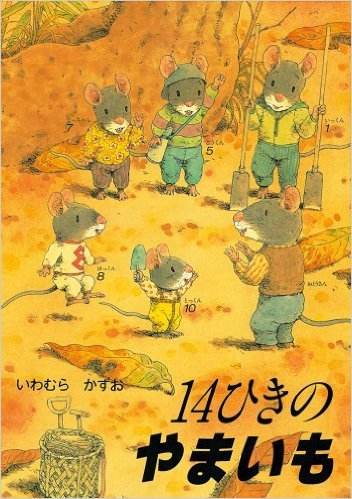 Kazuo Iwamura's 14 Mice and the Mountain Yams (my translation)lunch with a Pakistani writer with whom I discovered only one degree of separation . . .
Kazuo Iwamura's 14 Mice and the Mountain Yams (my translation)lunch with a Pakistani writer with whom I discovered only one degree of separation . . .

book signings . . .

a panel session on book reviewing, another on editing books for children with Editor Akiko Beppu of Kaiseisha, and a comprehensive session on manga: "The Japanese Manga Scene and Manga vs. Picture Books" presented by manga-ka Miki Yamamoto.
The finale for Day 3 was the Children's Literature Lecture "Japanese Children's Books--the Present and the Future" presented by editor, translator and writer Yumiko Sakuma, who focused on three areas: Post WW2, Recent Trends, and Challenges for Children's Books.
 NBDCS Chairperson Clair Chang and translator Yumiko SakumaAnd since many of the Japan Country of Focus folks attended that outstanding lecture, we gathered for a final photo.
NBDCS Chairperson Clair Chang and translator Yumiko SakumaAnd since many of the Japan Country of Focus folks attended that outstanding lecture, we gathered for a final photo.

Later there was Peranakan food at the evening Makan and Mingle and after that Japan speakers enjoyed some down time along the river.

The following Saturday, my last day in Singapore, the festival included master classes and the teachers congress that I was not participating in, so I enjoyed strolling around Katong with illustrator Kazumi Wilds.

AFCC is always an extraordinary experience resulting in lasting friendships, collaborations and connections. This year was truly special with the spotlight on children's literature from Japan. Thank you to everyone involved in AFCC, and special thanks to Festival Director Kenneth Quek, R. Ramachadran, the AFCC Board of Advisors, the National Library of Singapore, The National Book Development Board, and to everyone on the Japan Country of Focus Team. What a memorable conference!
 AFCC is always a jam-packed conference, and this year I hit the ground running--presenting, mingling, and attending as many sessions as possible. AFCC is held in the heart of Singapore at the National Library.
AFCC is always a jam-packed conference, and this year I hit the ground running--presenting, mingling, and attending as many sessions as possible. AFCC is held in the heart of Singapore at the National Library. National Library of Singapore
National Library of Singapore
 Banner featuring an illustration by the beloved Japanese illustrator Chihiro Iwasaki
Banner featuring an illustration by the beloved Japanese illustrator Chihiro IwasakiThis year the entire SCBWI Japan regional team attended and presented within the Japan Country of Focus events.
 SCBWI Japan Regional Team: Mariko Nagai, Holly Thompson, Avery Udagawa, Naomi KojimaThe AFCC opening ceremony included the announcement of the Scholastic Asian Book Award winners, and the launch and tour of the exhibition "The History of Japanese Picture Books from e-ingakyo to The Family of Fourteen" from the Chihiro Art Museum, now at the National Library of Singapore.
SCBWI Japan Regional Team: Mariko Nagai, Holly Thompson, Avery Udagawa, Naomi KojimaThe AFCC opening ceremony included the announcement of the Scholastic Asian Book Award winners, and the launch and tour of the exhibition "The History of Japanese Picture Books from e-ingakyo to The Family of Fourteen" from the Chihiro Art Museum, now at the National Library of Singapore. Ribbon cutting for The History of Japanese Picture Books
Ribbon cutting for The History of Japanese Picture Books
 Chihiro Art Museum Curator Michiko Matsukata introducing the exhibitionOn Day 1 of the festival, I attended illustrator Calef Brown's wonderful opening session on whimsical and nonsensical illustrations.
Chihiro Art Museum Curator Michiko Matsukata introducing the exhibitionOn Day 1 of the festival, I attended illustrator Calef Brown's wonderful opening session on whimsical and nonsensical illustrations. Calef Brown with fansNext was Japanese-to-English translator Cathy Hirano presenting "On Translation."
Calef Brown with fansNext was Japanese-to-English translator Cathy Hirano presenting "On Translation."
Then I moderated the fascinating session by Ramineh Rezazadeh of Iran on Gilgamesh Legend and Modern Encounters . . .

then attended the panel session "What Makes a Book Award-worthy" that included children's literature historian Leonard Marcus. And in between sessions, there was book shopping . . .
 with translator Avery Udagawa, children's lit historian Leonard Marcus, translator Cathy Hirano
with translator Avery Udagawa, children's lit historian Leonard Marcus, translator Cathy Hirano
 A few of the bookstore offerings
A few of the bookstore offeringsand visits to the Japan booth.
 Japan Booth
Japan BoothNext I presented "Tackling Novel Revision," perfectly moderated by Eugene Tay...

then served on the First Pages Critique panel with author Cynthia Leitich Smith of the children's lit blog Cynsations . . .
 Sharing shelf space with Cynthia Leitich Smith!and Andrea Pasion-Flores of Jacaranda Literary Agency. And to jump ahead, SCBWI Japan's Hitomi Otani signed her contract with Jacaranda Literary Agency during the AFCC festival! Here they are at the aquarium...
Sharing shelf space with Cynthia Leitich Smith!and Andrea Pasion-Flores of Jacaranda Literary Agency. And to jump ahead, SCBWI Japan's Hitomi Otani signed her contract with Jacaranda Literary Agency during the AFCC festival! Here they are at the aquarium... Agent Andrea Pasion-Flores and illustrator Hitomi OtaniThe evening of the first day was a casual gathering with everyone from Japan, and with warm welcoming words from R. Ramachadran, Executive Director of the National Book Development Council of Singapore.
Agent Andrea Pasion-Flores and illustrator Hitomi OtaniThe evening of the first day was a casual gathering with everyone from Japan, and with warm welcoming words from R. Ramachadran, Executive Director of the National Book Development Council of Singapore. J-E translator Avery Udagawa, E-J translator Yumiko Sakuma, NBDCS Exec. Dir. R. RamachadranDay two started with my presentation "Penning for the Preteen," with an interactive session on building middle-grade novels. Next I attended a presentation on special library collections in Asia. Following that I enjoyed an excellent session by Mariko Nagai: "Children and Poetry."
J-E translator Avery Udagawa, E-J translator Yumiko Sakuma, NBDCS Exec. Dir. R. RamachadranDay two started with my presentation "Penning for the Preteen," with an interactive session on building middle-grade novels. Next I attended a presentation on special library collections in Asia. Following that I enjoyed an excellent session by Mariko Nagai: "Children and Poetry."After that was my book launch for my middle-grade verse novel Falling into the Dragon's Mouth which is set in Japan.

And after that, my presentation "Verse Novels Crossing Borders."

And, still Day 2, I attended the illustration First Look session and the session "The History of Japanese Picture Books."
That evening was the Japan Country of Focus celebration, held at the Sentosa S.E.A. Aquarium.
First, there was the oversize guest book.
 Author/Illustrator Kazuo Iwamura signs the guest bookAnd there were the sharks.
Author/Illustrator Kazuo Iwamura signs the guest bookAnd there were the sharks.

 Illustrator Hitomi Otani, Author Trevor Kew, Illustrator Naomi Kojima, Editor Akiko Beppu, Translator Yumiko Sakuma And of course, the book launch was underwater.
Illustrator Hitomi Otani, Author Trevor Kew, Illustrator Naomi Kojima, Editor Akiko Beppu, Translator Yumiko Sakuma And of course, the book launch was underwater. Book Launch for two new AFCC bilingual titlesThere was dance and musical entertainment and celebration--an unforgettable night!
Book Launch for two new AFCC bilingual titlesThere was dance and musical entertainment and celebration--an unforgettable night! AFCC bilingual publications book team On Day 3, with no presentations, I was able to fully savor the Japan Focus sessions at AFCC.
AFCC bilingual publications book team On Day 3, with no presentations, I was able to fully savor the Japan Focus sessions at AFCC.First, Naomi Kojima's session "A Child's World in Japanese Picture Books" in which she discussed all of these books . . .

then a session by Kazuo Iwamura, author of the 14 Mice books that I have always loved . . .
 Kazuo Iwamura's 14 Mice and the Mountain Yams (my translation)lunch with a Pakistani writer with whom I discovered only one degree of separation . . .
Kazuo Iwamura's 14 Mice and the Mountain Yams (my translation)lunch with a Pakistani writer with whom I discovered only one degree of separation . . .
book signings . . .

a panel session on book reviewing, another on editing books for children with Editor Akiko Beppu of Kaiseisha, and a comprehensive session on manga: "The Japanese Manga Scene and Manga vs. Picture Books" presented by manga-ka Miki Yamamoto.
The finale for Day 3 was the Children's Literature Lecture "Japanese Children's Books--the Present and the Future" presented by editor, translator and writer Yumiko Sakuma, who focused on three areas: Post WW2, Recent Trends, and Challenges for Children's Books.
 NBDCS Chairperson Clair Chang and translator Yumiko SakumaAnd since many of the Japan Country of Focus folks attended that outstanding lecture, we gathered for a final photo.
NBDCS Chairperson Clair Chang and translator Yumiko SakumaAnd since many of the Japan Country of Focus folks attended that outstanding lecture, we gathered for a final photo.
Later there was Peranakan food at the evening Makan and Mingle and after that Japan speakers enjoyed some down time along the river.

The following Saturday, my last day in Singapore, the festival included master classes and the teachers congress that I was not participating in, so I enjoyed strolling around Katong with illustrator Kazumi Wilds.

AFCC is always an extraordinary experience resulting in lasting friendships, collaborations and connections. This year was truly special with the spotlight on children's literature from Japan. Thank you to everyone involved in AFCC, and special thanks to Festival Director Kenneth Quek, R. Ramachadran, the AFCC Board of Advisors, the National Library of Singapore, The National Book Development Board, and to everyone on the Japan Country of Focus Team. What a memorable conference!
Published on June 16, 2016 02:09
June 9, 2016
Zen Reset
A #PoetryFriday post.
Research can be meditative.
Recently, for research on several writing projects, I spent a few days in Kyoto.
I stayed at the Zen Buddhist temple Shunkō-in . . .
 Shunkō-in
Shunkō-in
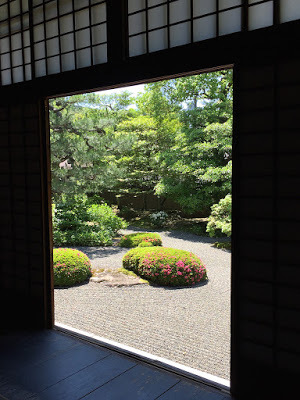 Shunkō-inone of 46 subtemples within the Myōshinji temple complex.
Shunkō-inone of 46 subtemples within the Myōshinji temple complex.
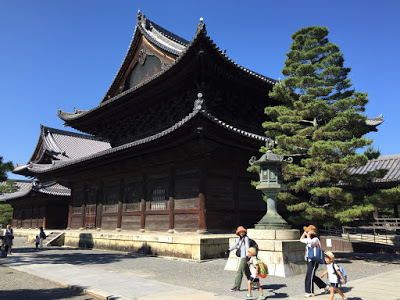 MyōshinjiI practiced zen meditation.
MyōshinjiI practiced zen meditation.
seated for twenty too aware of my posture broom sweeping some moss
I bicycled within the complex and to other nearby temples and temple complexes.
 Ninnaji
Ninnaji
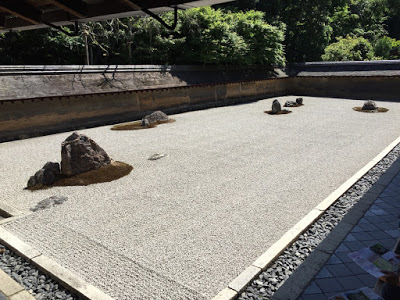 Ryōanji how attainable directional satori
Ryōanji how attainable directional satori
thanks to Google maps
I contemplated Zen gardens.
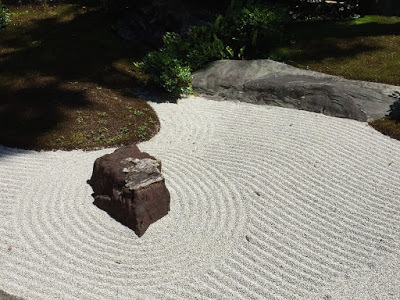 Daishin-in
Daishin-in
templed out, I think but this one is still open
quiet shouts me in
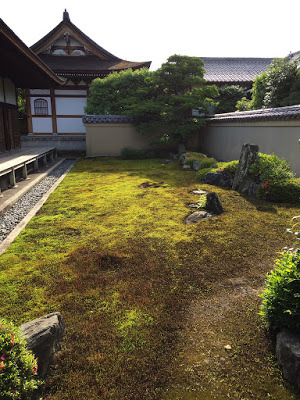 Ryōgen-inI ate at small neighborhood restaurants.
Ryōgen-inI ate at small neighborhood restaurants.
line near temple gate cheap okonomiyaki
griddle to myself
I savored small moments and wrote small poems.
rattle beckoning lizard on the window pane
shaking its head—yes?
I look forward to another Zen reset soon!
All poems in this post are © Holly Thompson, All Rights Reserved
Research can be meditative.
Recently, for research on several writing projects, I spent a few days in Kyoto.
I stayed at the Zen Buddhist temple Shunkō-in . . .
 Shunkō-in
Shunkō-in
 Shunkō-inone of 46 subtemples within the Myōshinji temple complex.
Shunkō-inone of 46 subtemples within the Myōshinji temple complex. MyōshinjiI practiced zen meditation.
MyōshinjiI practiced zen meditation.seated for twenty too aware of my posture broom sweeping some moss
I bicycled within the complex and to other nearby temples and temple complexes.
 Ninnaji
Ninnaji
 Ryōanji how attainable directional satori
Ryōanji how attainable directional satorithanks to Google maps
I contemplated Zen gardens.
 Daishin-in
Daishin-in templed out, I think but this one is still open
quiet shouts me in
 Ryōgen-inI ate at small neighborhood restaurants.
Ryōgen-inI ate at small neighborhood restaurants.line near temple gate cheap okonomiyaki
griddle to myself
I savored small moments and wrote small poems.
rattle beckoning lizard on the window pane
shaking its head—yes?
I look forward to another Zen reset soon!
All poems in this post are © Holly Thompson, All Rights Reserved
Published on June 09, 2016 22:47
May 19, 2016
5 Verse Novels for APA Heritage Month
A #PoetryFriday #VerseNovels #Crossing Borders post
This week for Poetry Friday and Asian Pacific American Heritage month, I share with you five verse novels with characters of Japanese heritage. Happy Reading!
Full Cicada Moon by Marilyn Hilton
Somewhere Among by Annie Donwerth-Chikamatsu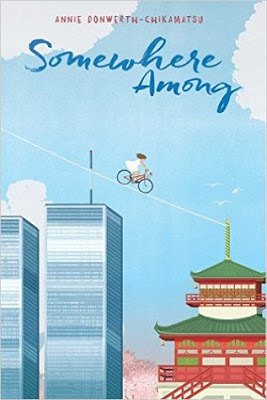
Up From the Sea by Leza Lowitz
Dust of Eden by Mariko Nagai
Orchards by Holly Thompson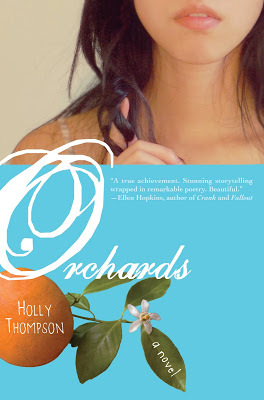
This week for Poetry Friday and Asian Pacific American Heritage month, I share with you five verse novels with characters of Japanese heritage. Happy Reading!
Full Cicada Moon by Marilyn Hilton

Somewhere Among by Annie Donwerth-Chikamatsu

Up From the Sea by Leza Lowitz

Dust of Eden by Mariko Nagai

Orchards by Holly Thompson

Published on May 19, 2016 22:01
May 13, 2016
Loquats
It's Poetry Friday. And here is a poem about one of my favorite fruits in Japan--the biwa or loquat. Loquats are sort of an opposite fruit--with flowers blooming in winter and fruit ripening in late spring. I'll be back in Japan in a couple weeks--just in time for loquats!
This poem has a nod to the prolific and wise author poet Jane Yolen, whose admonition to writers is to write every day, ignore distractions, and follow the rule of BIC--Butt In Chair.
Loquats
among ovate leaves on limbs leaning over a neighbor’s fence, they cluster and thrust at me, taunting—arm’s lengthfrom my second story study window
I’ve watched them morph from white flowers on fuzzy stemsto green nubs, to hard bulbsto a pale orange fruit, perfect in a fist
from my desk I can feel the thin skin lift and peel back in strips, see pale flesh drip, taste the sweet, as almond-size seeds tumble over teeth and gather in a cheek
I twist away from my study windowwith those laden limbs hoveringand proffering and vow to stay firm
butt in my chair, waiting till dark
© Holly Thompson, All Rights Reserved
This poem has a nod to the prolific and wise author poet Jane Yolen, whose admonition to writers is to write every day, ignore distractions, and follow the rule of BIC--Butt In Chair.
Loquats

among ovate leaves on limbs leaning over a neighbor’s fence, they cluster and thrust at me, taunting—arm’s lengthfrom my second story study window
I’ve watched them morph from white flowers on fuzzy stemsto green nubs, to hard bulbsto a pale orange fruit, perfect in a fist
from my desk I can feel the thin skin lift and peel back in strips, see pale flesh drip, taste the sweet, as almond-size seeds tumble over teeth and gather in a cheek
I twist away from my study windowwith those laden limbs hoveringand proffering and vow to stay firm
butt in my chair, waiting till dark
© Holly Thompson, All Rights Reserved
Published on May 13, 2016 11:31
May 6, 2016
Notice Poems 30 Days
For the U.S. National Poetry Month, I wrote 30 Notice Poems. Each Notice poem was written to accompany a photograph of a particular detail of Kamakura, the town in Japan where I have lived for many years, and the setting for my new verse novel
Falling Into the Dragon’s Mouth
. The poems are all companion poems to the novel, in Jason's voice, with Cora and various other characters making occasional cameo appearances.

In my current school visits I'm thrilled to be guiding students in poetry craft as they create their own Notice Poems. My hope is that young poets around the world will begin writing and sharing #NoticePoems--poems revealing the worlds they notice in their own towns and cities.
So now, for #PoetryFriday, here is the full list of links to my April 2016 Notice Poems. I hope you enjoy them!
Day 1 Notice
Day 2 Sakura Trick
Day 3 Shoreline
Day 4 Red String Park
Day 5 Lotus Wake-Up
Day 6 Rooftops
Day 7 Wakame
Day 8 Koi Fish
Day 9 Beached
Day 10 Tanbo
Day 11 Shirasu
Dat 12 Station
Day 13 Questions for a Squid
Day 14 Digs
Day 15 Tonbi
Day 16 Bell
Day 17 Wave Roofs
Day 18 Snail Food
Day 19 Yagura
Day 20 Tree Seat
Day 21 Dagashiya
Day 22 New Green
Day 23 Sakura Shells
Day 24 Futon
Day 25 Manhole
Day 26 Temple Cat
Day 27 Dragon Pot
Day 28 Tetrapods
Day 29 Rain
Day 30 Mount Fuji

Have you noticed the world in your town? Share your own Notice Poems with the hashtag #NoticePoems
Notice Poems—A National Poetry Month poem series by author Holly Thompson relating to the verse novel Falling Into the Dragon’s Mouth, set in Kamakura, Japan.
Verse novels by Holly Thompson: Falling into the Dragon’s Mouth The Language Inside Orchards
Crashing Wave image by www.johnnyautomatic.com

In my current school visits I'm thrilled to be guiding students in poetry craft as they create their own Notice Poems. My hope is that young poets around the world will begin writing and sharing #NoticePoems--poems revealing the worlds they notice in their own towns and cities.
So now, for #PoetryFriday, here is the full list of links to my April 2016 Notice Poems. I hope you enjoy them!
Day 1 Notice
Day 2 Sakura Trick
Day 3 Shoreline
Day 4 Red String Park
Day 5 Lotus Wake-Up
Day 6 Rooftops
Day 7 Wakame
Day 8 Koi Fish
Day 9 Beached
Day 10 Tanbo
Day 11 Shirasu
Dat 12 Station
Day 13 Questions for a Squid
Day 14 Digs
Day 15 Tonbi
Day 16 Bell
Day 17 Wave Roofs
Day 18 Snail Food
Day 19 Yagura
Day 20 Tree Seat
Day 21 Dagashiya
Day 22 New Green
Day 23 Sakura Shells
Day 24 Futon
Day 25 Manhole
Day 26 Temple Cat
Day 27 Dragon Pot
Day 28 Tetrapods
Day 29 Rain
Day 30 Mount Fuji

Have you noticed the world in your town? Share your own Notice Poems with the hashtag #NoticePoems
Notice Poems—A National Poetry Month poem series by author Holly Thompson relating to the verse novel Falling Into the Dragon’s Mouth, set in Kamakura, Japan.
Verse novels by Holly Thompson: Falling into the Dragon’s Mouth The Language Inside Orchards
Crashing Wave image by www.johnnyautomatic.com
Published on May 06, 2016 20:00
April 29, 2016
Mount Fuji
Notice Poems—A National Poetry Month poem series by author Holly Thompson relating to the verse novel Falling Into the Dragon’s Mouth, set in Kamakura, Japan. #NoticePoems
Mount Fuji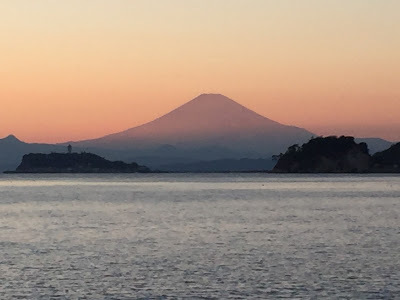
the mountain completesa visible horizon but a horizon minus the mountain leaves eyes heart, sky always wanting more
© Holly Thompson, All Rights Reserved

Have you noticed the world in your town? Share your own Notice Poems with the hashtag #NoticePoems
Notice Poems—A National Poetry Month poem series by author Holly Thompson relating to the verse novel Falling Into the Dragon’s Mouth, set in Kamakura, Japan.
Verse novels by Holly Thompson: Falling into the Dragon’s Mouth The Language Inside Orchards
Crashing Wave image by www.johnnyautomatic.com
Mount Fuji

the mountain completesa visible horizon but a horizon minus the mountain leaves eyes heart, sky always wanting more
© Holly Thompson, All Rights Reserved

Have you noticed the world in your town? Share your own Notice Poems with the hashtag #NoticePoems
Notice Poems—A National Poetry Month poem series by author Holly Thompson relating to the verse novel Falling Into the Dragon’s Mouth, set in Kamakura, Japan.
Verse novels by Holly Thompson: Falling into the Dragon’s Mouth The Language Inside Orchards
Crashing Wave image by www.johnnyautomatic.com
Published on April 29, 2016 21:34



